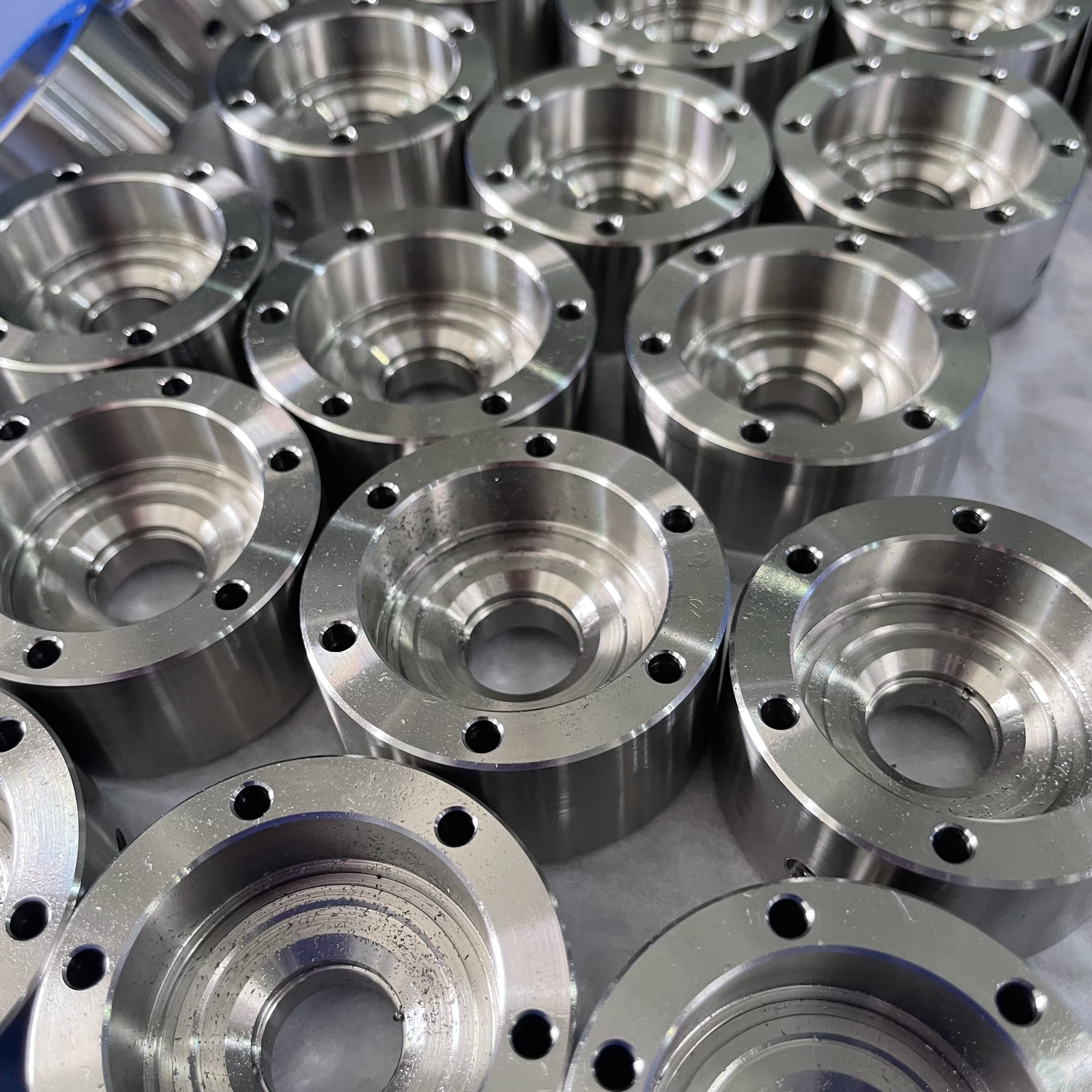How to ensure the dimensional stability of the workpiece during CNC machining of aluminum alloy parts?

Understanding the Challenge of Dimensional Stability in CNC Machining of Aluminum Alloy Parts
In the realm of CNC machining, ensuring dimensional stability is a critical aspect, particularly when working with aluminum alloy parts. Let's delve into what dimensional stability entails and why it holds paramount importance in this context.
What is Dimensional Stability and Why Does it Matter?
Defining Dimensional Stability
Dimensional stability refers to the ability of a material to retain its original dimensions and shape during various processes, such as cutting, shaping, or exposure to external forces. In the context of CNC machining, it signifies the capacity of a workpiece to maintain precise measurements and structural integrity throughout the manufacturing process.
The Impact of Dimensional Instability on CNC Machined Parts
When dimensional instability occurs during CNC machining, it can lead to deviations from the intended specifications, resulting in components that do not meet quality standards. This can cause inefficiencies, rework, and ultimately impact the overall production timeline.
Understanding the difference between recoverable dimensional changes, plastic deformation, and dimensional instability is crucial for controlling deformations in aluminum machining. Aluminum is dimensionally stable, allowing a large portion to be removed while keeping residual stress under control.
The Unique Challenges Posed by Aluminum Alloy Parts
Properties of Aluminum Alloys
Aluminum alloys are renowned for their lightweight nature, high strength-to-weight ratio, and excellent corrosion resistance. These properties make them highly sought after in various industries, including aerospace and automotive.
Why Aluminum Alloys are Prone to Distortion
Despite their numerous advantages, aluminum alloys pose unique challenges due to their susceptibility to distortion during CNC machining. It's essential to comprehend these challenges and implement strategies to mitigate them effectively.
Aluminum is very dimensionally stable, allowing a lot to be cut away while keeping residual stress in check.
Key Strategies for Ensuring Dimensional Stability
Now that we understand the challenges posed by dimensional stability in CNC machining of aluminum alloy parts, it's crucial to explore key strategies for ensuring the integrity of the workpiece throughout the manufacturing process.
Reducing Internal Stress in Aluminum Materials
Importance of Material Selection
Selecting the appropriate aluminum alloy is paramount for minimizing internal stress and ensuring dimensional stability during CNC machining. Certain alloys, such as 7075 and 2024, are known for their high strength and low susceptibility to deformation, making them favorable choices for precision machining applications. Additionally, these alloys exhibit excellent machinability, allowing for intricate designs without compromising on structural integrity.
Techniques for Stress Relief
Implementing stress relief techniques is essential for maintaining dimensional stability in aluminum components. One effective method involves heat treatment, which helps alleviate residual stresses induced during machining processes. For instance, a patent titled "Stress relieving of an age hardenable aluminum alloy product" highlights innovative methods to relieve stress in age-hardenable aluminum alloys, contributing to improved dimensional stability.
Enhancing Tool Efficiency and Design
The Role of Cutting Tools in Maintaining Stability
The selection of cutting tools plays a pivotal role in preserving dimensional stability during CNC machining of aluminum alloy parts. Utilizing carbide or diamond-coated tools can significantly reduce tool wear and enhance precision, thereby minimizing the risk of distortion. Furthermore, employing advanced cooling techniques, such as cryogenic machining, can mitigate thermal-induced deformations while optimizing tool efficiency.
Design Considerations for Minimizing Distortion
Incorporating design elements that minimize distortion is fundamental to ensuring dimensional stability in aluminum components. Utilizing optimized tool geometries with adequate rake angles and clearance provisions can effectively reduce cutting forces and prevent workpiece deflection. Moreover, integrating adaptive control systems that dynamically adjust cutting parameters based on real-time feedback can further enhance part accuracy and minimize deviations from intended specifications.
By strategically addressing internal stresses in aluminum materials and optimizing tool efficiency and design considerations, manufacturers can significantly improve the dimensional stability of CNC-machined aluminum alloy parts.
Practical Tips for Reducing Distortion in Aluminum Alloy Components

When it comes to CNC machining of aluminum alloy parts, implementing effective strategies to reduce distortion is crucial for maintaining dimensional stability throughout the manufacturing process. Let's explore practical tips and techniques that can significantly contribute to minimizing distortions in aluminum components.
Improving Workpiece Clamping Techniques
The Importance of Proper Clamping
Proper workpiece clamping is essential for minimizing distortions during CNC machining of aluminum alloy parts. Utilizing appropriate clamping techniques helps secure the workpiece firmly in place, reducing the likelihood of vibrations and deformations during cutting operations. One effective method involves employing face compression clamping, which evenly distributes pressure across the workpiece surface, thereby minimizing elastic deformations and ensuring dimensional accuracy. Additionally, utilizing suction cups for thin-walled cylindrical parts can provide stable and uniform clamping, effectively mitigating distortions caused by traditional clamping methods.
Innovative Clamping Solutions
Innovative advancements in clamping technology have paved the way for specialized solutions tailored to address the unique challenges posed by aluminum machining. For instance, magnetic workholding systems offer a reliable and efficient alternative for securing aluminum components with complex geometries, providing uniform support while minimizing the risk of distortion. Furthermore, utilizing modular fixture systems equipped with adjustable locating elements enables precise positioning and secure clamping, contributing to enhanced dimensional stability during CNC machining.
Organizing the Production Process Effectively
Planning and Sequencing Operations
Organizing the production process with meticulous planning and sequencing of operations is instrumental in reducing distortions in aluminum alloy components. By strategically scheduling machining operations based on material properties and part geometry, manufacturers can minimize thermal-induced deformations and optimize tool performance. Additionally, adopting a systematic approach to tool path optimization ensures consistent chip removal and minimizes cutting forces, thereby preserving dimensional accuracy throughout the manufacturing process.
The Role of Proper Tool Grounding and Back Angle Adjustment
Proper tool grounding plays a pivotal role in maintaining dimensional stability during CNC machining of aluminum alloy parts. Ensuring adequate grounding minimizes electrostatic discharge (ESD) risks while enhancing tool performance and precision. Moreover, adjusting back angles on cutting tools contributes to reducing friction between the workpiece and cutter, effectively eliminating internal stresses that could lead to distortions. By optimizing tool grounding practices and back angle adjustments, manufacturers can mitigate potential sources of distortion while ensuring precise machining outcomes.
By incorporating advanced clamping techniques and organizing production processes with precision-focused strategies, manufacturers can significantly enhance dimensional stability while mitigating distortions in CNC-machined aluminum alloy components.
Reflecting on the Importance of Dimensional Stability
The Benefits of Maintaining Dimensional Stability
Ensuring dimensional stability in CNC machining of aluminum alloy parts yields significant benefits that directly impact the overall quality, reliability, and cost-effectiveness of the manufacturing process.
Enhanced Part Quality and Reliability
Maintaining dimensional stability in CNC-machined aluminum alloy parts is pivotal for ensuring exceptional part quality and reliability. By minimizing distortions and deviations from intended specifications, manufacturers can deliver components with precise dimensions, smooth surface finishes, and consistent structural integrity. This not only enhances the overall aesthetics of the parts but also contributes to their long-term performance and durability. Customers can rely on products that meet stringent quality standards, fostering trust and satisfaction in the end-use applications.
Cost Savings and Efficiency Improvements
Emphasizing dimensional stability leads to notable cost savings and efficiency improvements throughout the manufacturing cycle. By reducing rework, scrap rates, and material wastage associated with distorted components, manufacturers can optimize resource utilization and minimize production overheads. Additionally, enhanced part quality minimizes the likelihood of post-machining defects or failures, thereby mitigating warranty claims and costly recalls. Moreover, by streamlining processes through improved dimensional stability, manufacturers can achieve higher throughput rates while maintaining superior part precision, ultimately driving operational efficiency.
Moving Forward: Continuous Improvement in CNC Machining
As technology continues to evolve rapidly within the realm of CNC machining, embracing innovation and advancing skill development are crucial for sustained progress in achieving dimensional stability.
Embracing Innovation and Technology
The integration of advanced machining technologies such as real-time monitoring systems, adaptive control algorithms, and predictive maintenance solutions holds immense potential for further enhancing dimensional stability in aluminum machining. These innovations enable proactive identification of potential sources of distortion while facilitating dynamic adjustments to machining parameters based on real-time feedback. Furthermore, leveraging state-of-the-art cutting tool materials with enhanced wear resistance properties contributes to prolonged tool life and consistent part accuracy.
The Importance of Skill Development and Knowledge Sharing
The testimonial from Maintenance Service Providers underscores the significance of operator expertise in achieving optimal dimensional stability during CNC machining of aluminum alloys. A skilled operator's proficiency in calculating feed rates, spindle speeds tailored for aluminum machining, ideal cutting depths per pass, as well as meticulous attention to coolant usage significantly influences dimensional stability outcomes. Therefore, continuous skill development initiatives aimed at honing operators' competencies are essential for maximizing the benefits associated with maintaining dimensional stability.
By recognizing the multifaceted advantages linked to maintaining dimensional stability in CNC-machined aluminum alloy parts and prioritizing ongoing innovation alongside skill enhancement efforts within the workforce, manufacturers can elevate their operational capabilities while delivering superior-quality components consistently.
See Also
Key Strategies for CNC Machining Precision Aluminum Parts Without Scratches
Grasping Material Needs for Precision CNC Machining
Crucial Steps for Achieving Accurate CNC Machining Clamping
About US
Follow Us
Your prototype holds unparalleled significance, and we deeply value its uniqueness. Collaborating with you during the preparation phase for running your prototype or parts is a commitment we gladly embrace. Whether it's a single part or a complex assembly, we are dedicated to selecting the optimal tools and pathways to bring your envisioned product to life.
At Precision Fab CNC Machining, we specialize in producing parts for prototypes, short runs, and high-volume production. Our prototyping machine capabilities extend across metal, plastic, and wood machining, with welding fabrication services available to complement and finalize your prototype if required.
Address
Address: Room320 10F, Building A,Nanshan international building, Dayawan District, Huizhou, Guangdong, 516001 China
Contacts
billy@timaycnc.com

